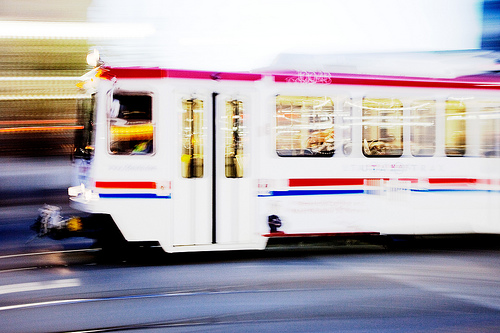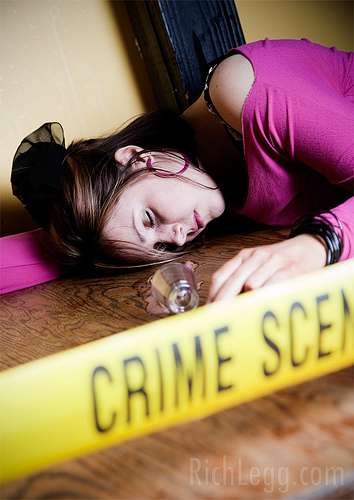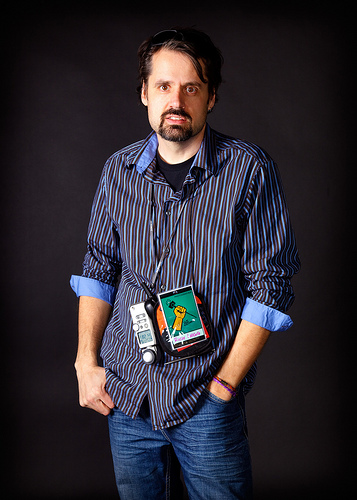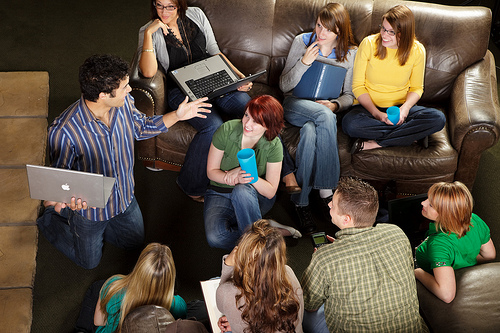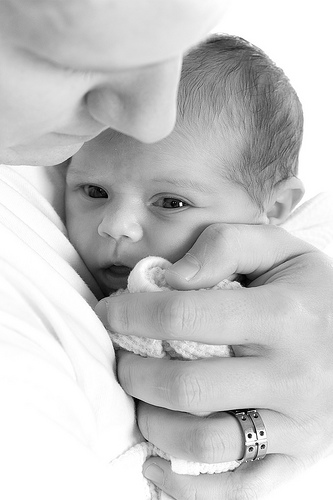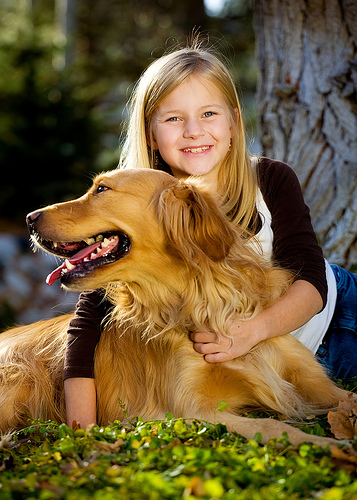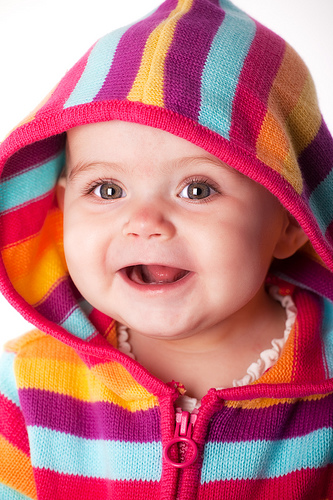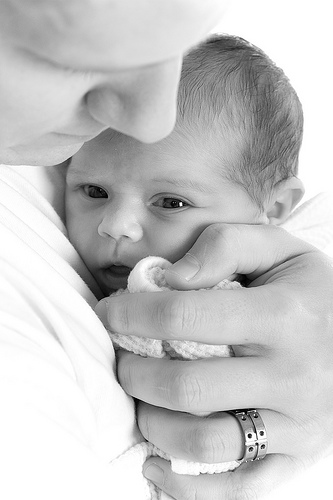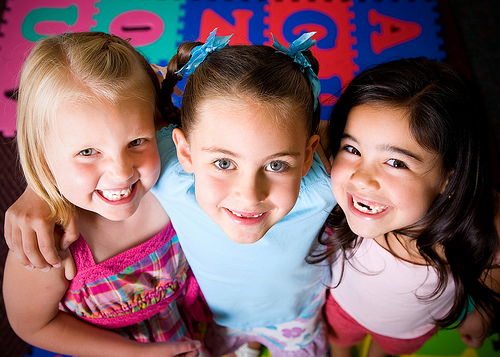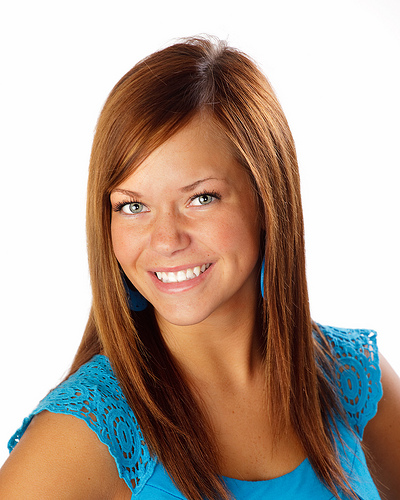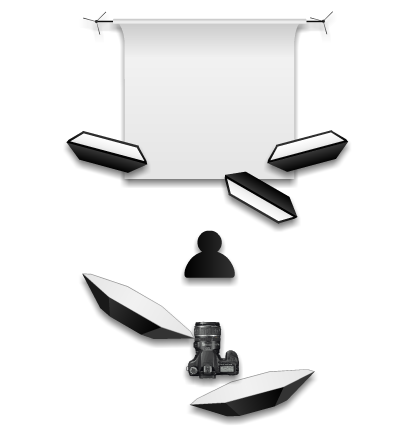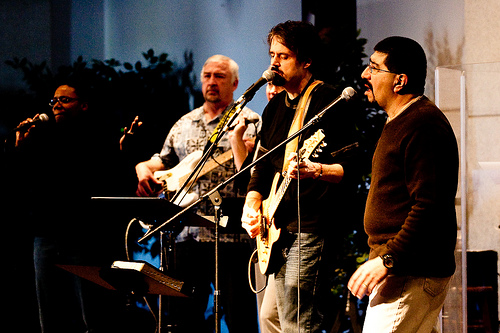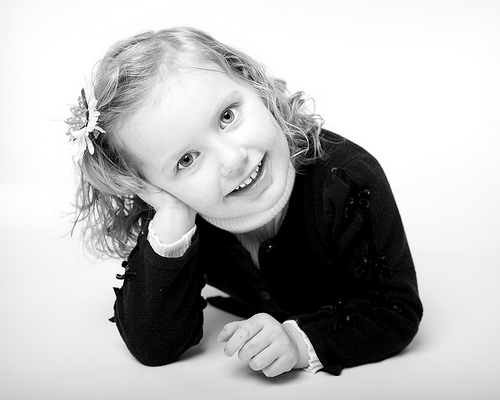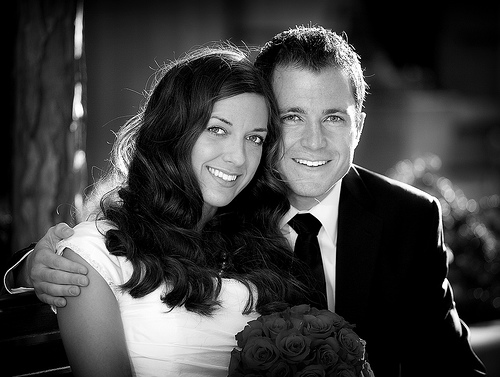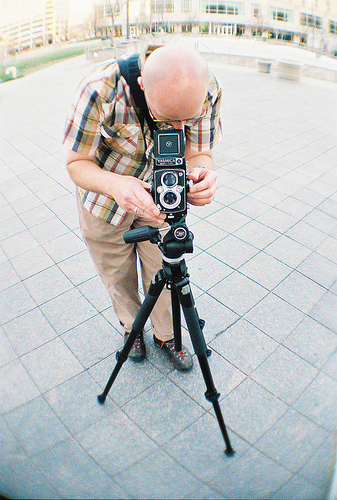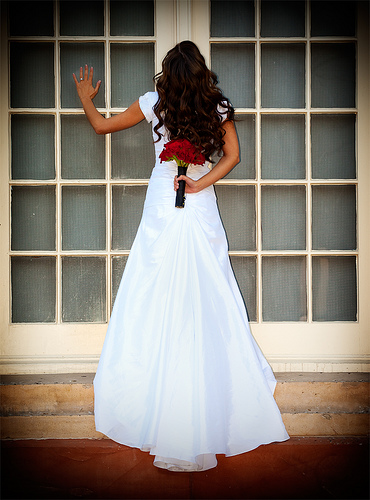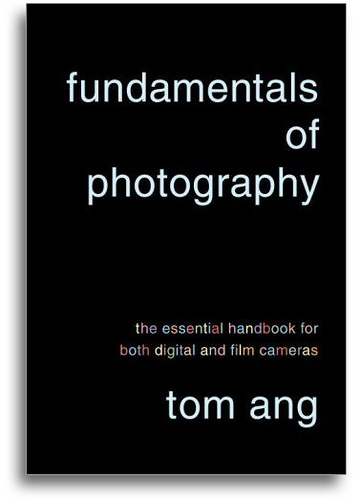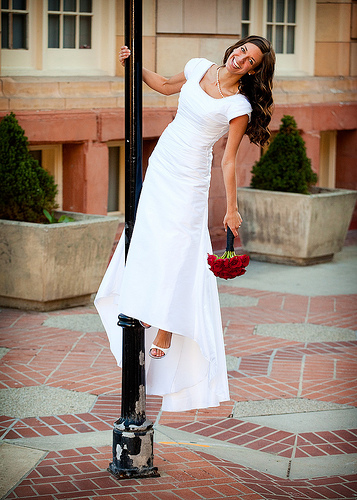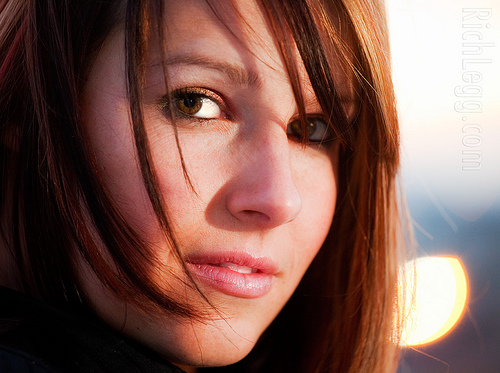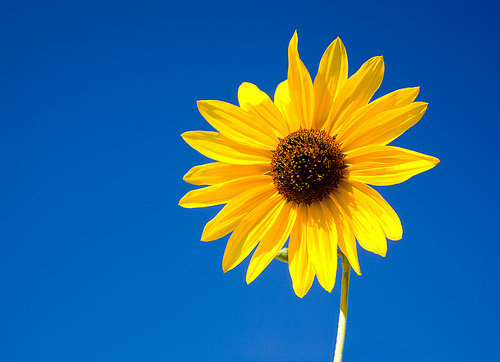April 30, 2009
Eye One
Canon 5D Mark II, Canon 24-105 f/4L lens – 1/80 second, f/5.6, ISO 100
LeggNet’s Digital Capture
© Rich Legg, Inc. All rights reserved.
April 29, 2009
…as the train went by
April 28, 2009
End of the Line
April 27, 2009
Mr. Light Test
How’s this for vanity?
Here’s a shot of me that I forgot was taken. I’m editing images this week from last month’s iStock event in Salt Lake City and I came across this on one of the memory cards. I apparently stepped in as a “model” when we were setting up the lights and someone (Nicolesy?) took a pic of me with my camera.
Canon 5D Mark II, Canon 24-105 f/4L lens – 1/125 second, f/9, ISO 100
April 24, 2009
Strength in Numbers
April 23, 2009
Or Are We Dancer?
April 21, 2009
Photographing Children – Some of What I’ve Learned
Anyone who has spent much time photographing children will probably agree with me when I say that there is a special place in heaven for photographers that specialize in taking pictures of children. Taking pictures of youngsters can be one of the most rewarding tasks, but it can also be one of the most frustrating.
Specializing in stock photography gives me the freedom to photograph a wide range of subjects, but one subject that seems to be frequently revisited is children. While I don’t count myself as an expert child photographer, I have learned a few things along the way that I thought I’d share in today’s post.
GET ON THEIR LEVEL
The feature image of cute little Saylor on the top of this page is a perfect example of this. While doing the studio portrait session she was acting a little bit shy and put her head down on the floor. When I saw this, I quickly got down adjacent to her to capture the scene. By putting my camera literally on the floor, I was able to create a viewpoint that few adults (grandparents etc.) in her life will ever see of her.
One thing I would have liked to do different on this shot was to have quickly dropped my lights to a lower position. The height of the lightstands eliminated any catchlights in her eyes. However, if I had taken the time to adjust the lights I could have missed the shot – which brings me to my next point:
BE READY
Kids, and especially babies, can change moods in what seems like a microsecond. The photographer can come into the shoot with a distinct plan on what and how they want to shoot and an upset child can quickly derail it.
This image of baby Chloe is an example of this. The plan for the session was to create newborn images for the birth announcement. Unfortunately, Chloe didn’t get the memo. She wanted no part of being anywhere but in mom or dad’s arms. During the shoot she became extremely unhappy being in front of the lights with mom. To help soothe her, dad took her into his arms and stepped just out of the frame. Seeing this tender scene I quickly spun a softbox around and took the picture. The spontaneous un-planned image became the final shot for the announcement.
EXAGGERATE
Similar to the first tip of getting on their level, I like to also exaggerate parts of a scene when photographing children. This might involve an extreme wide angle close-up shot, over-the-top laughing or like in this example shooting from a very high angle.
For this stock image, which is one of my top sellers, I stood on a step ladder to create the look. When looking at the image the viewer doesn’t get the impression that it was taken from nearly 9 feet up, just an exaggerated perception that these are little girls.
INVOLVE THINGS FROM EVERYDAY LIFE
In addition to the simple backgrounds that seem to typify my studio work, I like to do environmental portraits of children. For me this means shooting images of them involving things from their everyday life. Toys, pets, in their room, etc.
Here is an example of including a pet in the image. While having a rambunctious golden retriever in a portrait can be a challenge (note that he didn’t even look at me!), the inclusion adds another element to the image and can be especially meaningful to the family.
KEEP IT SHORT
Especially with babies, keep the session short. Don’t worry about capturing numerous shots, but try and get one or two keepers. I know that when I’ve tried to keep shooting to get “that one shot” after the child has become bored/tired/upset with the experience, it seems to do nothing more than frustrate me, the subject and the parents.
In a studio session of Chloe (a few months after her newborn pic above), this image of the happy little girl is literally one of only two shots she smiled in and it was taken right at the beginning of the shoot. Shortly after this was taken, she decided that she wanted no part of what we (her parents and I) had planned for her. We could have stopped after 5 exposures and already had our best for the day.
ELIMINATE DISTRACTIONS (PARENTS)
When photographing children it is a parent’s instinct to want to help the photographer make the child smile. This can be a frustrating thing for the photographer. Inevitably, the parent can help get a great expression but in it the child is looking off to the side and not at the camera. My recommendation is to graciously talk with mom and dad before shooting and explain that you can get better results if they are off to the side and out of the child’s sight.
These are just a few of the things that come to mind when I think about photographing children. I would love to learn what other photographers do to create great kid photos. If you’ve got something you’d like to add, please chime in with a comment or two.
Labels: tutorial
April 21, 2009
Photographing Children – Some of What I’ve Learned
Anyone who has spent much time photographing children will probably agree with me when I say that there is a special place in heaven for photographers that specialize in taking pictures of children. Taking pictures of youngsters can be one of the most rewarding tasks, but it can also be one of the most frustrating.
Specializing in stock photography gives me the freedom to photograph a wide range of subjects, but one subject that seems to be frequently revisited is children. While I don’t count myself as an expert child photographer, I have learned a few things along the way that I thought I’d share in today’s post.
GET ON THEIR LEVEL
The feature image of cute little Saylor on the top of this page is a perfect example of this. While doing the studio portrait session she was acting a little bit shy and put her head down on the floor. When I saw this, I quickly got down adjacent to her to capture the scene. By putting my camera literally on the floor, I was able to create a viewpoint that few adults (grandparents etc.) in her life will ever see of her.
One thing I would have liked to do different on this shot was to have quickly dropped my lights to a lower position. The height of the lightstands eliminated any catchlights in her eyes. However, if I had taken the time to adjust the lights I could have missed the shot – which brings me to my next point:
BE READY
Kids, and especially babies, can change moods in what seems like a microsecond. The photographer can come into the shoot with a distinct plan on what and how they want to shoot and an upset child can quickly derail it.
This image of baby Chloe is an example of this. The plan for the session was to create newborn images for the birth announcement. Unfortunately, Chloe didn’t get the memo. She wanted no part of being anywhere but in mom or dad’s arms. During the shoot she became extremely unhappy being in front of the lights with mom. To help soothe her, dad took her into his arms and stepped just out of the frame. Seeing this tender scene I quickly spun a softbox around and took the picture. The spontaneous un-planned image became the final shot for the announcement.
EXAGGERATE
Similar to the first tip of getting on their level, I like to also exaggerate parts of a scene when photographing children. This might involve an extreme wide angle close-up shot, over-the-top laughing or like in this example shooting from a very high angle.
For this stock image, which is one of my top sellers, I stood on a step ladder to create the look. When looking at the image the viewer doesn’t get the impression that it was taken from nearly 9 feet up, just an exaggerated perception that these are little girls.
INVOLVE THINGS FROM EVERYDAY LIFE
In addition to the simple backgrounds that seem to typify my studio work, I like to do environmental portraits of children. For me this means shooting images of them involving things from their everyday life. Toys, pets, in their room, etc.
Here is an example of including a pet in the image. While having a rambunctious golden retriever in a portrait can be a challenge (note that he didn’t even look at me!), the inclusion adds another element to the image and can be especially meaningful to the family.
KEEP IT SHORT
Especially with babies, keep the session short. Don’t worry about capturing numerous shots, but try and get one or two keepers. I know that when I’ve tried to keep shooting to get “that one shot” after the child has become bored/tired/upset with the experience, it seems to do nothing more than frustrate me, the subject and the parents.
In a studio session of Chloe (a few months after her newborn pic above), this image of the happy little girl is literally one of only two shots she smiled in and it was taken right at the beginning of the shoot. Shortly after this was taken, she decided that she wanted no part of what we (her parents and I) had planned for her. We could have stopped after 5 exposures and already had our best for the day.
ELIMINATE DISTRACTIONS (PARENTS)
When photographing children it is a parent’s instinct to want to help the photographer make the child smile. This can be a frustrating thing for the photographer. Inevitably, the parent can help get a great expression but in it the child is looking off to the side and not at the camera. My recommendation is to graciously talk with mom and dad before shooting and explain that you can get better results if they are off to the side and out of the child’s sight.
These are just a few of the things that come to mind when I think about photographing children. I would love to learn what other photographers do to create great kid photos. If you’ve got something you’d like to add, please chime in with a comment or two.
LeggNet’s Digital Capture
© Rich Legg, Inc. All rights reserved.
April 20, 2009
Headshot on White
One of my favorite models, Kylee, needed a simple headshot for an application so she came by the studio on Saturday so I could shoot it. This gave me an opportunity to work in the studio environment for one of the first times with the two White Lighting monolights with large octaboxes that I recently added to my lighting setup.
By using the lighting setup diagrammed below, I was able to create a portrait isolated on a pure white background without the need for additional background adjustment or “cutting out” in Photoshop. The addition of the two octaboxes (36″ and 48″) to my existing three softbox inventory has greatly increased my versatility in the studio. Additionally, I really like the round(ish) catchlights from these lights compared to the rectangular shaped catchlights I get with my large softboxes.
Canon 5D Mark II, Canon 70-200 f/4L lens – 1/100 second, f/8, ISO 100
LeggNet’s Digital Capture
© Rich Legg, Inc. All rights reserved.
April 19, 2009
…and on the Seventh Day
Image © Paul Rohde, Used with Permission
LeggNet’s Digital Capture
© Rich Legg, Inc. All rights reserved.
April 16, 2009
Apartment Community Photo Shoot
Here’s a quick sample from today’s stock photo shoot at a local apartment community. We had a great time even though the weather nixed a lot of our outdoor shooting plans. In spite of the crummy weather, we did manage to get some pool shots in during the 30 minutes or so that the sun decided to show up.
Thanks to everyone who helped out as models and assistants. I absolutely couldn’t do what I do without all your help.
Canon 5D Mark II, Canon 70-200 f/4L lens – 1/800 second, f/4, ISO 100
LeggNet’s Digital Capture
© Rich Legg, Inc. All rights reserved.
April 15, 2009
Using On Camera Flash for a Quick Outdoor Portrait
One of my quick-and-easy methods of shooting outdoor portraits is to position the subject with the sun at their back and then fill in their faces with an on camera flash. While this method of lighting is probably considered somewhat remedial for many experienced photographers, it is a technique that I get asked about on a fairly regular basis.
For this portrait of Bret and Jarica, I waited until the setting sun was just above a nearby building (the Federal Courthouse in downtown Salt Lake City) and the shade line was closing in on the bench they were sitting on. By waiting for the last few minutes of sunlight, the background was almost entirely in shade. I positioned the bench so that the sunlight would provide a rimlight around Bret and splash a small amount onto his face.
Once I had the subjects in position, I adjusted the flash compensation of my on-board flash (Canon 580EX II) to fill in the shade with a natural looking light. I accomplished this with a minus 1 f/stop setting relative to the natural light. The camera was set to A/V (aperture priority) setting with the lens wide open at f/4.
When I have an assistant with me I will frequently shoot a portrait like this with reflector light to fill in the faces. However, on an evening like this one where I was working alone, a strobe created fill light serves as a nice substitute.
Canon 5D Mark II, Canon 70-200 f/4L lens – 1/400 second, f/4, ISO 400
Labels: tutorial
April 15, 2009
Using On Camera Flash for a Quick Outdoor Portrait
One of my quick-and-easy methods of shooting outdoor portraits is to position the subject with the sun at their back and then fill in their faces with an on camera flash. While this method of lighting is probably considered somewhat remedial for many experienced photographers, it is a technique that I get asked about on a fairly regular basis.
For this portrait of Bret and Jarica, I waited until the setting sun was just above a nearby building (the Federal Courthouse in downtown Salt Lake City) and the shade line was closing in on the bench they were sitting on. By waiting for the last few minutes of sunlight, the background was almost entirely in shade. I positioned the bench so that the sunlight would provide a rimlight around Bret and splash a small amount onto his face.
Once I had the subjects in position, I adjusted the flash compensation of my on-board flash (Canon 580EX II) to fill in the shade with a natural looking light. I accomplished this with a minus 1 f/stop setting relative to the natural light. The camera was set to A/V (aperture priority) setting with the lens wide open at f/4.
When I have an assistant with me I will frequently shoot a portrait like this with reflector light to fill in the faces. However, on an evening like this one where I was working alone, a strobe created fill light serves as a nice substitute.
Canon 5D Mark II, Canon 70-200 f/4L lens – 1/400 second, f/4, ISO 400
LeggNet’s Digital Capture
© Rich Legg, Inc. All rights reserved.
April 14, 2009
Save the Date: Photowalking the Utah Museum of Natural History
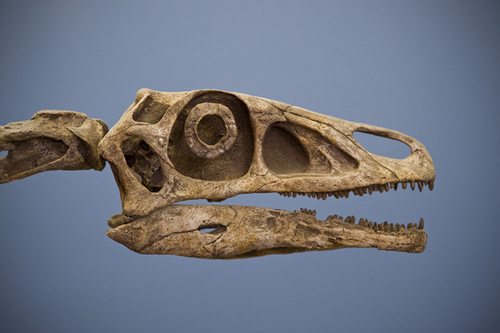
Image Credit: Bryan Jones
The next Photowalking Utah event is quickly approaching. The outing will be a visit to the Utah Museum of Natural History. This will be the first ever Sunday event for Photowalking Utah due to scheduling and availability of the museum. Here are some details from Bryan Jones’ announcement at PhotowalkingUtah.com:
The University of Utah Museum of Natural History provides a number of opportunities for photographing unusual objects including dinosaurs, rare collections and artifacts from around the world. In addition the building itself provides for some architectural photographic opportunities that will not be available long as the museum is building a modern, new building up by Red Butte Gardens. There are a number of points to our visit:
1) There will be an admission based on a Group Reservation Price of $4.50 per person unless you are a U of U student/faculty/etc in which case the price will be free.
2) There will also be a “Toadally Frogs” in the Special Exhibit Gallery. Use a low light lens without flash to photograph some of these frogs in their display case. If you have a macro lens, bring ’em.
3) Bring your tripod as we have been given special permission to use them for this visit.
4) UMNH allows for photography for private (non-professional, non-commercial) use of our exhibit areas and collections that are on exhibit. Flash photography is permitted in the permanent exhibits with the exception of exhibits containing life organisms, currently “Bugs Alive!”. The “Toadally Frogs” exhibit is limited to non-flash photography only, due to the sensitive nature of the live frogs.
5) UMNH has given us rights to post these photos on the Flickr and personal websites, however, they are not to be used for professional purposes. All photographs taken of exhibits and collections of objects in the Utah Museum of Natural History must be credited “From the Utah Museum of Natural History Collection” or “Property UMNH Collection”. They are looking for possible photographs to document the museum and the exhibits for their own website, so this will facilitate them finding images and asking photographers for rights to use them.
Date: Sunday April 19, 2009
Time: Noon – 3:00 pm
Location: 11390 E. Presidents Circle Salt Lake City, Utah 84112
As always, these events are open to photographers of all skill levels and type of camera used. For more information, visit the official announcement at photowalkingutah.com or the Flickr group announcement.
Labels: photowalking
April 14, 2009
Save the Date: Photowalking the Utah Museum of Natural History

Image Credit: Bryan Jones
The next Photowalking Utah event is quickly approaching. The outing will be a visit to the Utah Museum of Natural History. This will be the first ever Sunday event for Photowalking Utah due to scheduling and availability of the museum. Here are some details from Bryan Jones’ announcement at PhotowalkingUtah.com:
The University of Utah Museum of Natural History provides a number of opportunities for photographing unusual objects including dinosaurs, rare collections and artifacts from around the world. In addition the building itself provides for some architectural photographic opportunities that will not be available long as the museum is building a modern, new building up by Red Butte Gardens. There are a number of points to our visit:
1) There will be an admission based on a Group Reservation Price of $4.50 per person unless you are a U of U student/faculty/etc in which case the price will be free.
2) There will also be a “Toadally Frogs” in the Special Exhibit Gallery. Use a low light lens without flash to photograph some of these frogs in their display case. If you have a macro lens, bring ’em.
3) Bring your tripod as we have been given special permission to use them for this visit.
4) UMNH allows for photography for private (non-professional, non-commercial) use of our exhibit areas and collections that are on exhibit. Flash photography is permitted in the permanent exhibits with the exception of exhibits containing life organisms, currently “Bugs Alive!”. The “Toadally Frogs” exhibit is limited to non-flash photography only, due to the sensitive nature of the live frogs.
5) UMNH has given us rights to post these photos on the Flickr and personal websites, however, they are not to be used for professional purposes. All photographs taken of exhibits and collections of objects in the Utah Museum of Natural History must be credited “From the Utah Museum of Natural History Collection” or “Property UMNH Collection”. They are looking for possible photographs to document the museum and the exhibits for their own website, so this will facilitate them finding images and asking photographers for rights to use them.
Date: Sunday April 19, 2009
Time: Noon – 3:00 pm
Location: 11390 E. Presidents Circle Salt Lake City, Utah 84112
As always, these events are open to photographers of all skill levels and type of camera used. For more information, visit the official announcement at photowalkingutah.com or the Flickr group announcement.
LeggNet’s Digital Capture
© Rich Legg, Inc. All rights reserved.
April 10, 2009
Shooting Film
Last month a few of us from Photowalking Utah put together a Film Shooter’s Photowalk in Salt Lake City. The evening outing was both reminiscent and frustrating for me as a photographer. Since I have a long history shooting film it was nice to remember how it used to be. On the other hand though, it was frustrating to shoot within the limits of film – namely the lack of instant preview, fixed ISO and limited exposure count.
I came away from the evening with a simple realization: I’m okay with never shooting film again.
It is not only the three reasons I listed above that made me come to this conclusion. The advances in camera equipment and lenses with things such as viewfinder information, metering settings, weather sealing, etc. have made today’s cameras a joy to use compared to their film counterparts of yesterday.
Today’s image is one of my captures from the photowalk. The shot of Mike Calanan and his Yashica TLR was taken with a Mamiya 1000DTL. The fisheye effect was added with a magnification filter put onto the standard 50mm lens.
Mamiya 1000 DTL, Mamiya 50mm f/1.8 lens – Exposure Not Recorded
LeggNet’s Digital Capture
© Rich Legg, Inc. All rights reserved.
April 8, 2009
The Unconventional Bridal – Part II
April 8, 2009
The Unconventional Bridal – Part II
Canon 5D Mark II, Canon 70-200 f/4L lens – 1/200 second, f/4, ISO 400
LeggNet’s Digital Capture
© Rich Legg, Inc. All rights reserved.
April 7, 2009
Book Review: Fundamentals of Photography by Tom Ang
Today’s guest post was written by Utah photographer and Photowalking Utah member Rhett Olson. Rhett’s photography can be seen at www.rhettolsonphotography.com.
I started photography about ten years ago while writing a book, 100 Hikes in Utah. My co-author did most of the photography during our hiking and I would watch and ask questions. He would explain how using a high f-stop and long shutter speed in the slot canyons would give him enough light and keep all the walls in focus. I soon purchased a Pentax K1000 with a 50mm lens, a load of tri-X, and had a friend show me how to develop my negatives in my sink.
Because I didn’t always have access to my photography friends to ask questions, most of my learning going forward (outside of experimentation) was done on photo.net. There, I read a little about everything. Lighting, posing, processing, printing, gear, it was all there.
When I picked up Fundamentals of Photography, it felt like the print version of my learning on the Internet, but conveniently compiled in one location. Even the book’s jacket says it’s “everything you need to know; from the most practical advice, to the most sophisticated nuances.”
Ang defines photography, then breaks down the process from manipulating the light, capturing it, then processing the image and outputting it. Each color-coded chapter is broken into logical sections that cover everything from demosaiking and in-camera processing, to controlling image tonality and color theory.
The discussion photography in the realm of both traditional film and digital make the book relevant to any photographer. Ang details the types and sizes of film (35mm, medium format, and large format) and the advantages of each. Developing, enlarging, and printing is covered as well. He also outlines a hybrid method of using both film and digital; capturing the image on film, then scanning to a digital file for processing and output.
The book itself is a sturdy paperback, built like a field guide. It contains loads of colorful images, charts, and graphs. The use of sample images to illustrate points help in the understanding of each subject.
One example of this is on page 90 where a portrait of a woman is created with multiple lighting setups. Each image is shown next to a diagram of lighting setup and a written description. This format allows the reader to quickly see changes from each lighting setup to the next.
The first reference section on page 324 is another example where Ang uses pictures and diagrams to instruct. There, he outlines the process of diagnosing processing and printing defects. The associated chart shows an image, then lists the image’s defect, it’s diagnosis, and how the defect can be corrected.
In summary, I think Fundamentals of Photography is a great reference book for photographers. It covers a breadth of topics and allows readers to easily zero in on a subject they are interested in, or are experimenting with, and learn more.
Fundamentals of Photography is available at Amazon.com.
April 7, 2009
Book Review: Fundamentals of Photography by Tom Ang
Today’s guest post was written by Utah photographer and Photowalking Utah member Rhett Olson. Rhett’s photography can be seen at www.rhettolsonphotography.com.
I started photography about ten years ago while writing a book, 100 Hikes in Utah. My co-author did most of the photography during our hiking and I would watch and ask questions. He would explain how using a high f-stop and long shutter speed in the slot canyons would give him enough light and keep all the walls in focus. I soon purchased a Pentax K1000 with a 50mm lens, a load of tri-X, and had a friend show me how to develop my negatives in my sink.
Because I didn’t always have access to my photography friends to ask questions, most of my learning going forward (outside of experimentation) was done on photo.net. There, I read a little about everything. Lighting, posing, processing, printing, gear, it was all there.When I picked up Fundamentals of Photography, it felt like the print version of my learning on the Internet, but conveniently compiled in one location. Even the book’s jacket says it’s “everything you need to know; from the most practical advice, to the most sophisticated nuances.” Ang defines photography, then breaks down the process from manipulating the light, capturing it, then processing the image and outputting it. Each color-coded chapter is broken into logical sections that cover everything from demosaiking and in-camera processing, to controlling image tonality and color theory.The discussion photography in the realm of both traditional film and digital make the book relevant to any photographer. Ang details the types and sizes of film (35mm, medium format, and large format) and the advantages of each. Developing, enlarging, and printing is covered as well. He also outlines a hybrid method of using both film and digital; capturing the image on film, then scanning to a digital file for processing and output.The book itself is a sturdy paperback, built like a field guide. It contains loads of colorful images, charts, and graphs. The use of sample images to illustrate points help in the understanding of each subject.One example of this is on page 90 where a portrait of a woman is created with multiple lighting setups. Each image is shown next to a diagram of lighting setup and a written description. This format allows the reader to quickly see changes from each lighting setup to the next.The first reference section on page 324 is another example where Ang uses pictures and diagrams to instruct. There, he outlines the process of diagnosing processing and printing defects. The associated chart shows an image, then lists the image’s defect, it’s diagnosis, and how the defect can be corrected.In summary, I think Fundamentals of Photography is a great reference book for photographers. It covers a breadth of topics and allows readers to easily zero in on a subject they are interested in, or are experimenting with, and learn more.
Fundamentals of Photography is available at Amazon.com.
LeggNet’s Digital Capture
© Rich Legg, Inc. All rights reserved.
April 6, 2009
The Unconventional Bridal
April 6, 2009
The Unconventional Bridal
Canon 5D Mark II, Canon 70-200 f/4L lens – 1/320 second, f/4, ISO 400
LeggNet’s Digital Capture
© Rich Legg, Inc. All rights reserved.
April 3, 2009
Evening by Speedlite
Canon 5D Mark II, Canon 70-200 f/4L lens – 1/50 second, f/4, ISO 800
LeggNet’s Digital Capture
© Rich Legg, Inc. All rights reserved.
April 2, 2009
Photographing Flowers Mini-Clinic – Tonight!
Tonight is the night for the Photographing Flowers mini-clinic at the Salt Lake City Library. There is still plenty of room for anyone interested in attending. The clinic will be hosted by Ann Torrence and myself and will cover many great tips for taking stunning flower photos. Here are the details:
Date: Thursday April 2nd
Time: 6:30 – 8:00 pm
Location: Salt Lake City Main Library – 210 E 400 South, Conf. room #4, 4th floor
Cost: FREE!
These classes are open to anyone who has a desire to expand their photography knowledge. There will be info useful to photographers of any skill level.
See you there!
April 2, 2009
Photographing Flowers Mini-Clinic – Tonight!
Tonight is the night for the Photographing Flowers mini-clinic at the Salt Lake City Library. There is still plenty of room for anyone interested in attending. The clinic will be hosted by Ann Torrence and myself and will cover many great tips for taking stunning flower photos. Here are the details:
Date: Thursday April 2nd
Time: 6:30 – 8:00 pm
Location: Salt Lake City Main Library – 210 E 400 South, Conf. room #4, 4th floor
Cost: FREE!
These classes are open to anyone who has a desire to expand their photography knowledge. There will be info useful to photographers of any skill level.
See you there!
LeggNet’s Digital Capture
© Rich Legg, Inc. All rights reserved.
April 1, 2009
Talking about Photowalking Utah
Earlier this year I was talking with Ann Torrence about what a great thing we have in Utah with Photowalking Utah and how we really should work a bit harder on getting the word out about it. Well, today Ann and I had an opportunity to do just that.
We were invited to speak at the Sandy City Rotary Club about Photowalking Utah and our involvement with its inception and growth. It was a great feeling to play a video showing the growth from the first event in October of 2007 through last month’s PhotoCamp and to deliver a presentation chronicling the group’s history. The local business leaders in attendance seemed genuinely interested in Photowalking Utah and the success it has become being an all-volunteer group. I wouldn’t be at all surprised to see a few Rotarian Photowalkers at the next few events.
Today’s image is one Ann captured of me (with my Canon!) from her comfy seat at the head table.
Canon 5D, Canon 24-105 f/4L lens – 1/25 second, f/4, ISO 6400
LeggNet’s Digital Capture
© Rich Legg, Inc. All rights reserved.



